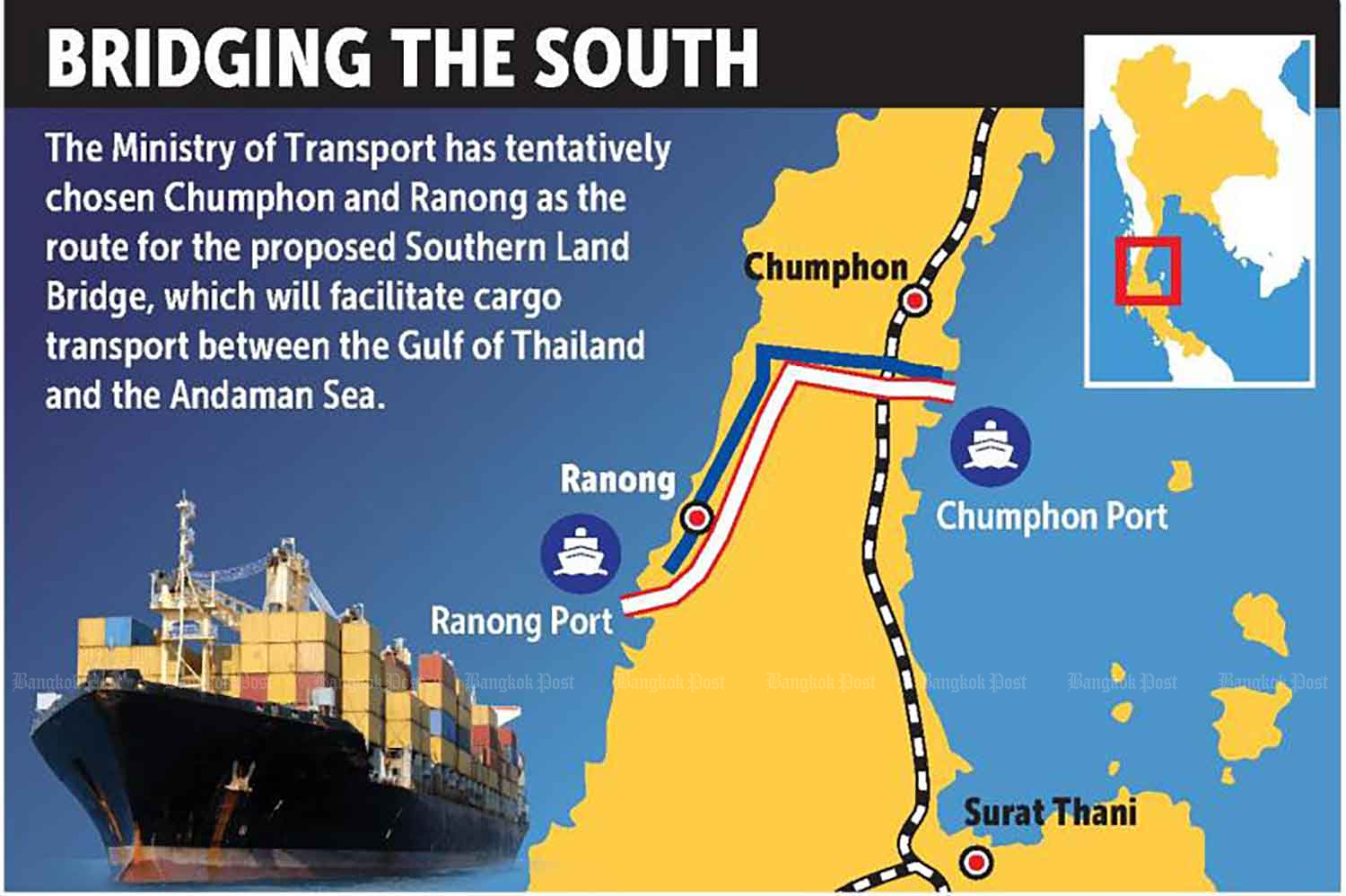Thailand’s ambitious plan to construct a 90-kilometer land bridge across its southern region has garnered attention. This proposed project aims to create a new trade route between the Indian and Pacific Oceans, potentially bypassing the well-established shipping lanes in the Straits of Malacca. Unlike the long-discussed Kra Canal, which faced numerous challenges, the land bridge appears more feasible on paper. However, it still encounters significant obstacles.
Key Challenges:
- Cost: The construction cost for this mega-project is estimated to be in the multi-billion dollar range.
- Security Concerns: The southern region of Thailand has been plagued by conflict, and addressing security issues is crucial.
- Mountainous Terrain: The land bridge would traverse mountainous terrain, which presents engineering challenges.
Despite its potential benefits, analysts caution that the Thai land bridge initiative could fail if not meticulously planned. The existing shipping infrastructure in the Straits of Malacca is deeply entrenched, and any disruption must be carefully managed.
Prime Minister’s Vision: Thai Prime Minister Srettha Thavisin envisions the land bridge as a catalyst for international investment. He believes it will transform Thailand into a thriving production hub. By shortening goods transport via the Malacca Strait by six to nine days, this global mega-project aims to boost trade efficiency.
In his recent address at the Thailand-China Investment Forum, Mr. Srettha expressed openness to Chinese investors, emphasizing the country’s commitment to enhancing its business environment. If successful, this ambitious venture could reshape regional trade dynamics and elevate Thailand’s economic prominence.
The land bridge project is designed to provide a new trade route between the Indian and Pacific Oceans. It will include two deep sea ports on Thailand’s eastern and western coasts as well as a rail and road system linking them together. The eastern port will be located in Chumphon province on the Gulf of Thailand and the other in Ranong province on the Andaman Sea. According to Mr Srettha, the cost is estimated at US$35.6 billion.

Assoc Prof Antonio L Rappa from the School of Business at the Singapore University of Social Sciences described the venture as “simply too costly” and cautioned that the separatist movement in Thailand’s restive south as well as the mountainous terrain of the project location could affect the construction, as quoted by Channel NewsAsia.
However, if it is successfully developed, Dr Rappa told CNA “it will significantly affect Singapore at least 50 years from now”.
The land bridge project was also studied during the previous government of Gen Prayut Chan-o-cha, who wished to expand Thailand's transport infrastructure and transform the country into a logistics hub of Asia.
The concept of establishing a new maritime route connecting the Gulf of Thailand with the Andaman Sea is not a recent idea. Historical records indicate that this idea dates back to the 17th century when the possibility of excavating the Kra Isthmus, the narrowest part of the Malay Peninsula in Ranong and Chumphon, was first explored.
Over the years, various governments have made unsuccessful attempts to construct the Kra Canal. Dr. Yuttaporn Issarachai, a political scientist from Sukhothai Thammathirat Open University, has mentioned that domestic political issues, environmental concerns, and internal security have been obstacles to the proposed excavation.

While the land bridge project is different from a canal, Dr. Issarachai stated that it presents similar challenges, including potential geopolitical conflicts. He highlighted that the creation of a new maritime passage near disputed areas could draw Thailand into territorial disputes involving countries like China, Vietnam, and the Philippines, as maritime shipping routes are crucial for economic profits and regional political stability.
Dr. Mohd Hazmi Mohd Rusli from Universiti Sains Islam Malaysia's Faculty of Syariah and Law suggested that the land bridge project might progress if China, a significant stakeholder, is committed to investing. He noted that a land bridge could be a more practical alternative to a canal since it wouldn't require excavation through the Kra Isthmus.



















